Outdoor landscaping has become more than just planting trees and trimming hedges—it’s now a thoughtful extension of your home’s personality and purpose. As people spend more time outside, interest in backyard enhancements that blend beauty with utility continues to rise. From low-maintenance plant choices to multi-functional zones with seating, shade, and fire features, strategic landscaping adds both value and enjoyment to your space. Whether you have a small courtyard or a wide open lawn, smart design can help you maximize curb appeal and outdoor living potential. This curated guide highlights fresh, creative ideas that suit every style, climate, and budget.
Forest-Garden Inspired Native Planting

Shifting the backyard ecosystem toward a more self-sustaining model begins with forest-garden inspired native planting. This approach mimics natural woodland layering—canopy trees, understory shrubs, herbaceous plants, ground covers, and root crops—to create a biodiverse, resilient system. Native species reduce water consumption and fertilizer dependency while attracting beneficial insects and local wildlife. Strategic placement of plants based on light tolerance and natural symbiosis builds a regenerative cycle over time. Beyond the environmental benefits, the visual layering brings dynamic textures and seasonal interest. For homeowners in areas prone to drought or extreme weather, this low-maintenance method offers a long-term landscaping solution rooted in ecological health.
Edible Foodscaping Beds

Edible foodscaping beds weave functionality into ornamental design by integrating vegetables, herbs, and fruiting shrubs alongside flowering perennials. Raised beds and border rows not only organize growth efficiently but also add geometric structure to garden layouts. Tomatoes can climb trellises while basil fills in the understory, creating a lush, productive scene. Berry-producing bushes and dwarf fruit trees further elevate both utility and aesthetic. This multifunctional approach transforms typical landscaping into an ongoing harvest, ideal for urban homesteads or suburban gardeners seeking sustainable living. With smart planning, edible beds can flourish year-round with rotation planting, while also reducing grocery bills and fostering food independence.
Mediterranean Drought-Tolerant Garden
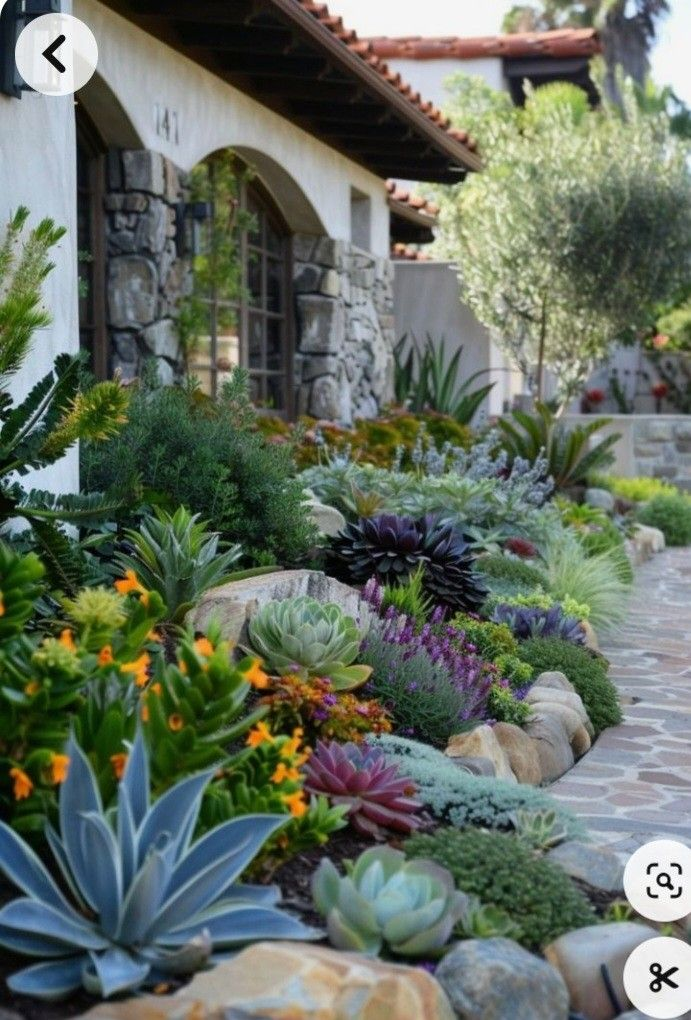
Dry climate landscaping thrives through Mediterranean drought-tolerant garden design. Prioritizing plants like lavender, rosemary, agave, and thyme, this approach minimizes water consumption while celebrating natural textures and color variation. Gravel mulch and decomposed granite pathways maintain permeability and reduce evaporation. Stone-edged beds break up hardscape monotony, while terracotta pots filled with hardy succulents add depth. These gardens perform exceptionally well under full sun, offering evergreen structure and blooms even during peak heat. Seasonal care is limited to strategic pruning and occasional deep watering. For homeowners in arid zones or those embracing water-wise practices, Mediterranean layouts balance practicality with timeless beauty.
Integrated Outdoor Living & Kitchen Zones
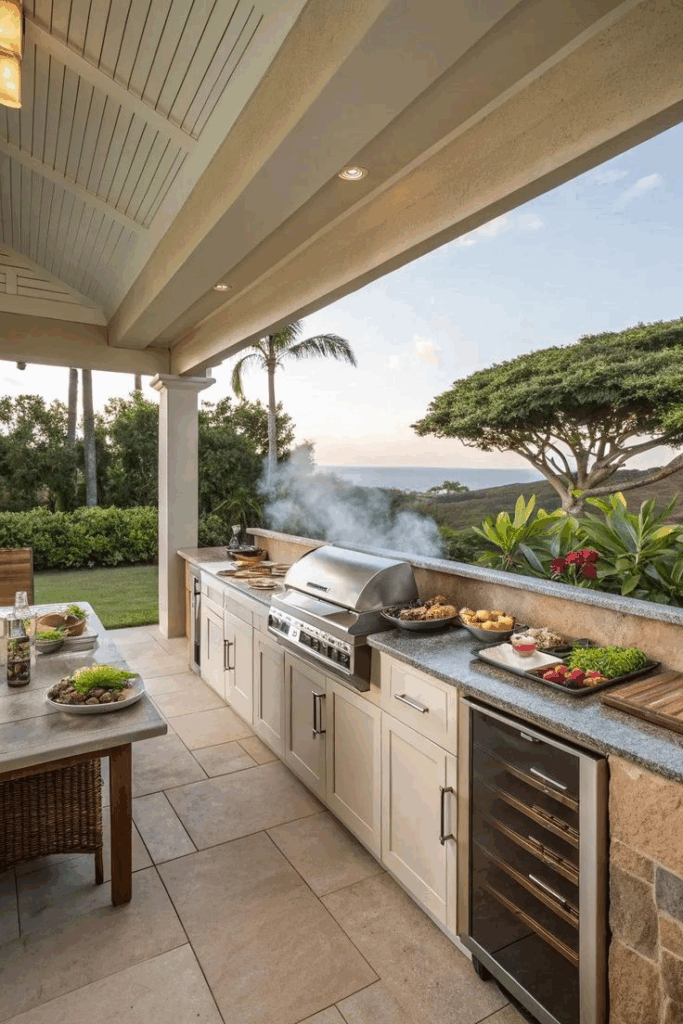
Merging lifestyle with landscape begins by shaping backyard layouts into integrated outdoor living and kitchen zones. This involves thoughtful placement of cooking stations, dining nooks, and lounge areas under shaded structures like pergolas or extended rooflines. Hard surfaces such as flagstone, composite decking, or porcelain pavers define functional spaces while maintaining continuity with the rest of the yard. Built-in grills, wood-fired ovens, and sink setups enhance usability, supported by weatherproof cabinetry and ample counter surfaces. Ambient lighting and fire features extend usability into the evening hours. Designed for both casual family evenings and larger gatherings, this layout blends hospitality and relaxation seamlessly.
Micro-Forest Shade Retreat Corner
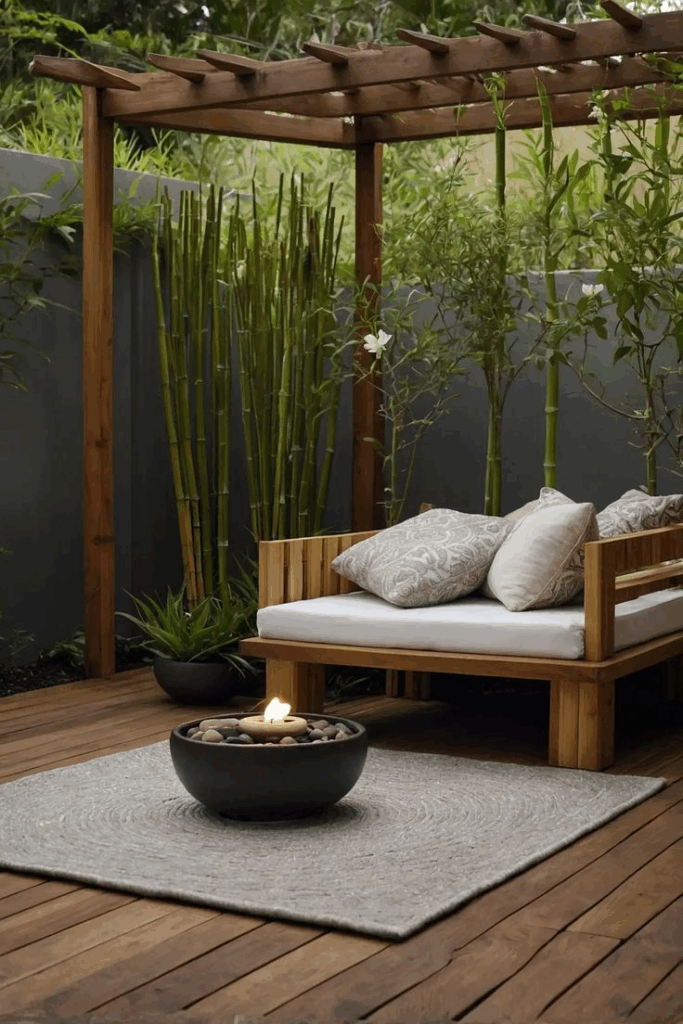
Escaping the heat becomes effortless with a micro-forest shade retreat nestled in a backyard corner. Dense groupings of native trees, such as serviceberry, dogwood, or redbud, create a cooling canopy that filters sunlight while enhancing privacy. Understory layers include shade-loving ferns, hostas, and ornamental grasses, which add motion and softness to the setting. Natural stone seating or wooden benches encourage quiet rest beneath the foliage. Mulched groundcover stabilizes moisture and prevents erosion. This pocket of forest not only offers temperature regulation but also serves as a restorative zone for mindfulness or reading. In urban and suburban lots, it’s a compact solution with powerful climate and mental health benefits.
Xeriscape with Curved Hardscape Edges
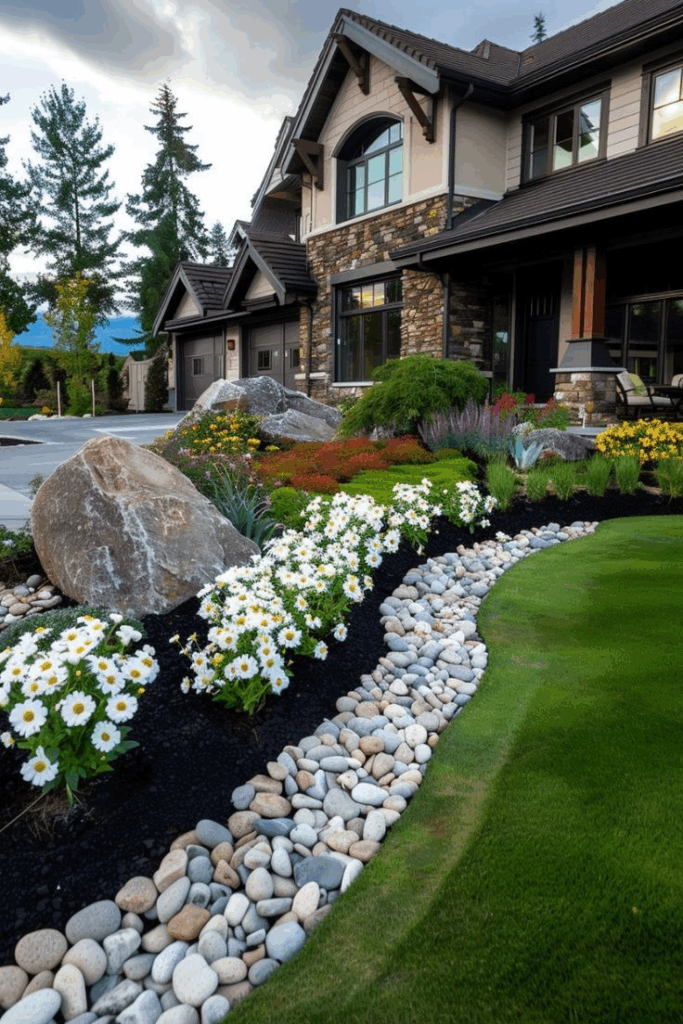
Sculptural beauty meets practicality in a xeriscape accented with curved hardscape edges. Using drought-tolerant native and adaptive plants arranged along soft, meandering lines, this design breaks away from rigid borders and embraces flow. Gravel or decomposed granite paths wind through pockets of succulents, ornamental grasses, and flowering perennials like yarrow or penstemon. Retaining walls or edging stones in natural shapes further soften the space while supporting soil integrity. This approach drastically reduces irrigation demands and long-term upkeep. Perfect for low-rainfall areas, curved xeriscapes provide both ecological and aesthetic value while encouraging foot traffic through their inviting form.
Vertical Green Screens & Living Walls

Living vertical elements redefine spatial design with green screens and living walls. Whether mounted on a fence, freestanding frame, or wall structure, these installations support a variety of climbing or pocket-planted greenery—from ivy and jasmine to ferns and lettuce. Vertical systems maximize space in compact yards while adding privacy and acoustic buffering. Modular panels with built-in irrigation allow for controlled water usage and easy maintenance. In urban settings, they soften hard edges and inject natural beauty into overlooked nooks. Whether used to divide garden zones or cover unsightly walls, these lush backdrops foster biodiversity and creative expression.
Smart-Irrigated Pollinator Meadow Patch
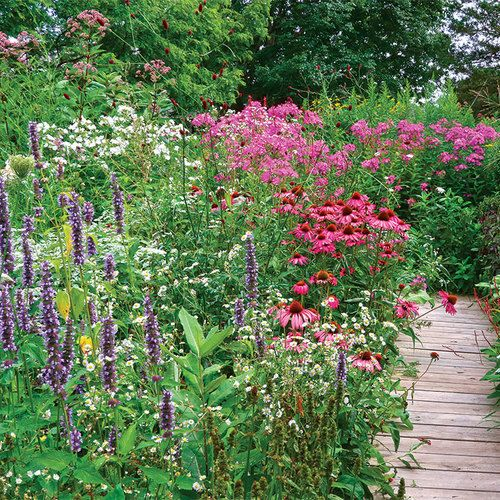
Supporting pollinator populations becomes a built-in advantage with a smart-irrigated meadow patch. Native wildflowers like coneflowers, bee balm, and goldenrod flourish in loosely organized plantings that mimic natural habitats. The addition of programmable drip systems ensures water efficiency while supporting root development and seasonal blooms. Strategically choosing plants that flower at different times extends visual appeal and food availability for bees, butterflies, and hummingbirds. Border pathways allow maintenance access while inviting visitors to experience the space up close. Low-maintenance yet high-impact, this feature boosts ecosystem health while reducing the need for turf and synthetic inputs.
Modular Seating with Planter Integration
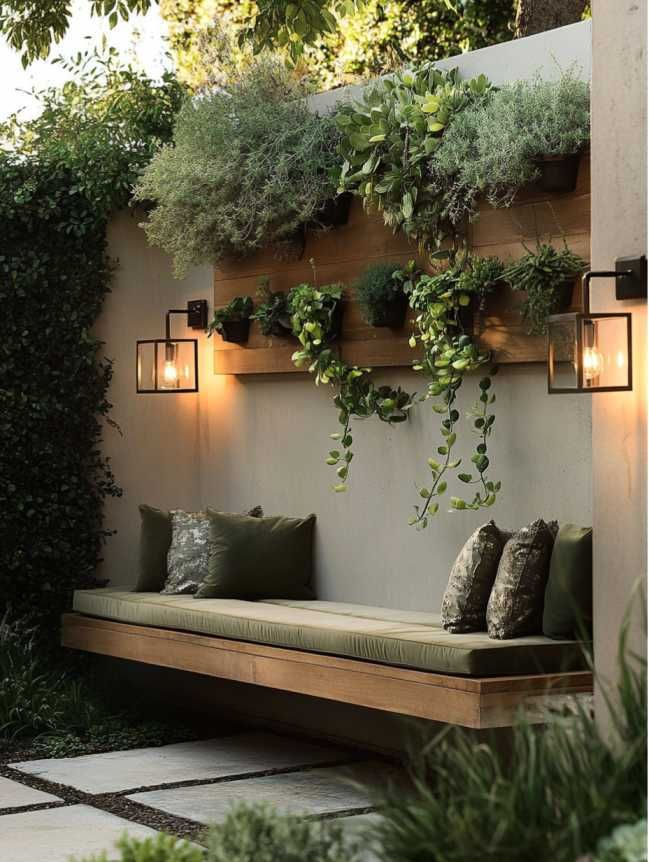
Built-in seating combined with planters offers a sleek, modular solution for backyard lounging. Raised platforms in materials like stained wood or composite decking feature integrated bench seating with planter boxes built into their backs or sides. These configurations save space while providing dual functionality—seating and greenery in one footprint. Ornamental grasses, herbs, or seasonal blooms can thrive in the planters, softening the hard edges and increasing biodiversity. Ideal for patios, decks, or firepit areas, this modular approach is especially suited for smaller yards or multifunctional outdoor rooms. The result is a clean, unified aesthetic with year-round usability.
Composite Decking Play Area
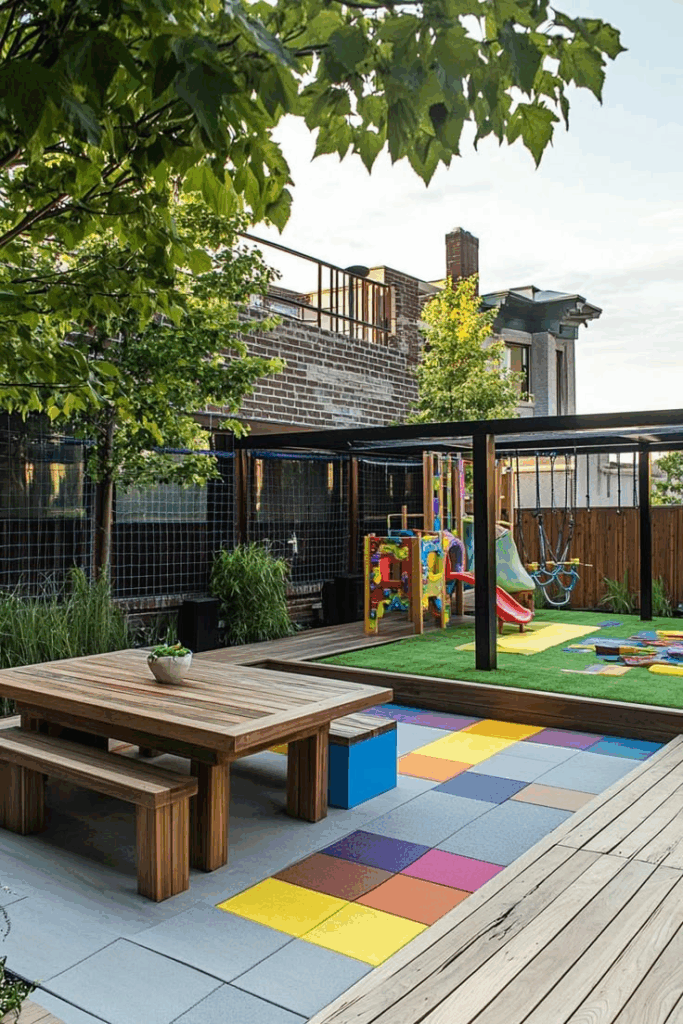
Play zones for children get a durable and safe upgrade with composite decking surfaces. These areas resist splinters, mold, and wear, offering a slip-resistant and low-maintenance foundation for swings, sandboxes, or creative games. Designated borders using planter boxes or low fencing help delineate the space while keeping visual continuity with the rest of the yard. Integrated shade sails or pergolas offer sun protection during peak hours. For added versatility, built-in storage benches can keep toys and sports gear tucked away. Composite decking is also eco-friendly, often made from recycled materials, making it a conscious and practical choice for family-centric landscaping.
Cold-Plunge + Sauna Wellness Nook
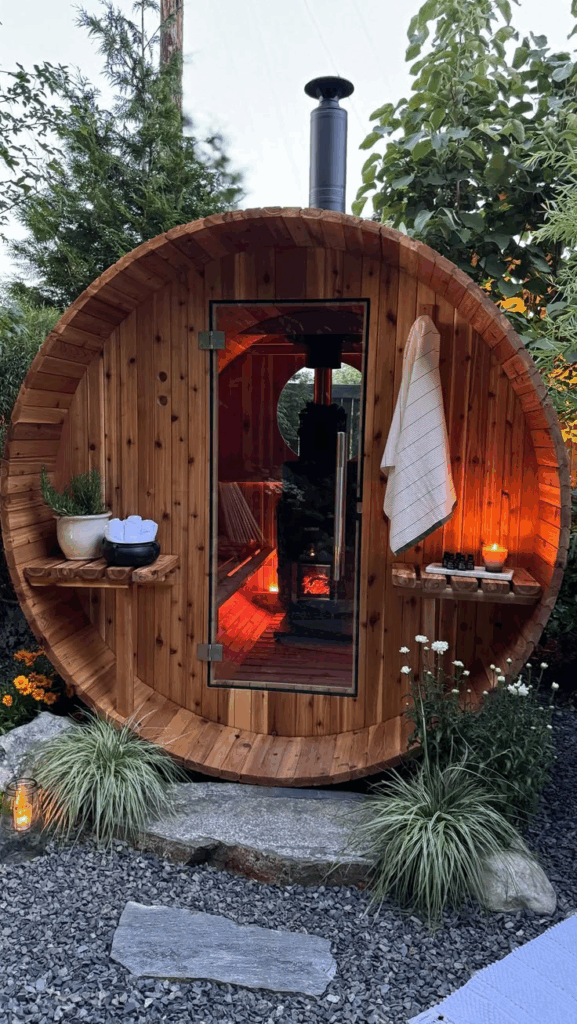
Tucked into a shaded corner of the yard, this cold-plunge and sauna wellness nook delivers a rejuvenating backyard escape rooted in hydrotherapy tradition. By combining hot and cold contrast bathing, the setup encourages circulation, reduces inflammation, and fosters deep relaxation after long workdays or intense workouts. The sauna—constructed from thermally treated wood—radiates comforting heat and aromatic steam, while the adjacent plunge pool remains crisp and inviting with chilled water filtered through natural stone.
Surrounding the space, dense plantings of ornamental grasses and evergreen shrubs help soften edges and provide privacy. A durable, non-slip composite deck grounds the area, while built-in hooks, towel shelves, and bench seating add functional charm. For ambiance, warm LED downlighting lines the steps and bench undersides, making evening sessions just as inviting. Optional Bluetooth speakers and a scented oil diffuser complete the sensory-rich experience.
Perfect for year-round use, this corner wellness retreat encourages daily routines that balance physical well-being and mental clarity. Whether used solo for morning invigoration or shared with a partner in the evening, it becomes a quiet sanctuary just steps from your back door—merging luxury spa elements with restorative nature-inspired design for a calming, wellness-forward backyard experience.
Mirror-Panel Feature Wall to Expand Space

Visual expansion is cleverly achieved with a mirror-panel feature wall positioned to reflect light and lush surroundings. Installed along fences, patios, or garden enclosures, these panels generate an illusion of added depth and brightness. Durable, weather-resistant materials ensure longevity, while strategic placement enhances plantings, water features, or sculpture views. This technique works especially well in narrow or shaded areas, where openness and light are at a premium. By reflecting garden symmetry or vertical greenery, mirrors inject elegance and spatial fluidity without structural alterations. Maintenance is minimal—occasional cleaning restores clarity and brilliance.
Stepped Stone Paths Through Shrub Borders
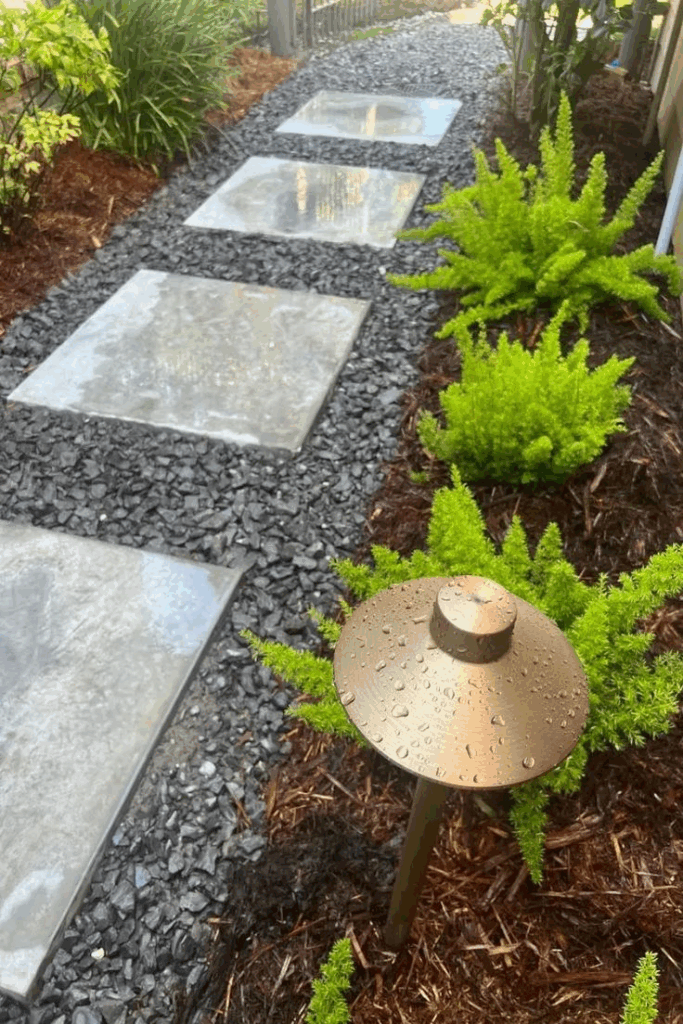
Paths that rise and fall in gentle elevation changes can be both practical and poetic. Stepped stone trails weaving through shrub borders define movement while protecting plants from foot traffic. Using natural stone like bluestone or slate ensures longevity and organic aesthetics. Shrubs along the route—such as spirea, boxwood, or hydrangea—frame the walkway with seasonal interest and color variation. Stepped transitions are especially helpful on sloped terrain, offering traction and controlling erosion. Lighting embedded along edges increases safety during evening strolls. The result is a structured yet fluid passage that doubles as a visual highlight in any garden.
Cottage-Style Perennial Garden Rooms

Segmented garden rooms styled with cottage-inspired perennial beds create charming backyard escapes. Hedges, trellises, or low stone walls break the space into intimate sections, each filled with bloom-heavy plants like foxglove, delphinium, and phlox. Gravel or brick paths wind through, encouraging exploration while providing structure. Layered planting in staggered heights maximizes color throughout the seasons. This layout promotes biodiversity, welcoming pollinators and birds. Decorative touches—arched gates, vintage planters, and wrought-iron benches—further enrich the nostalgic atmosphere. For homeowners seeking low-tech serenity, this design delivers timeless appeal with manageable upkeep through seasonal pruning and division.
Smart Landscape Tech Integration
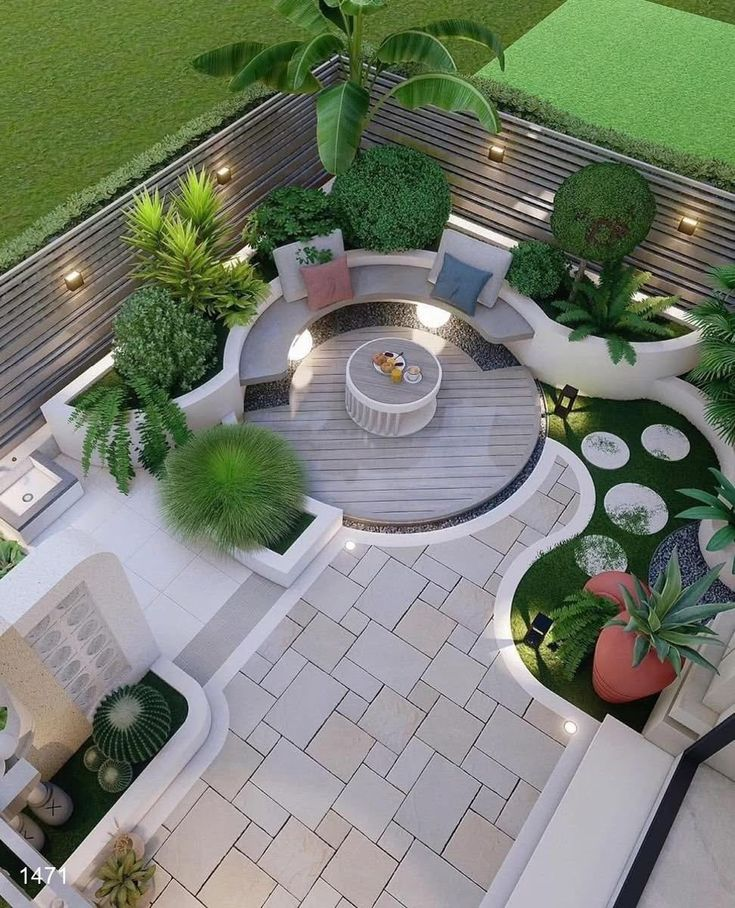
Landscape technology has evolved far beyond basic sprinklers. Smart systems now control lighting, irrigation, and even soil health monitoring through centralized apps. Homeowners can schedule watering based on local weather, automate LED garden uplights, or track nutrient levels using buried sensors. Integration with AI assistants or solar charging stations adds further convenience. Motion-activated path lights, programmable waterfalls, and automated shade structures offer both aesthetic and functional perks. Beyond the gadgetry, these technologies support sustainability by optimizing resource use. With proper planning, modern backyards can balance tradition and tech for a truly future-ready landscape.
